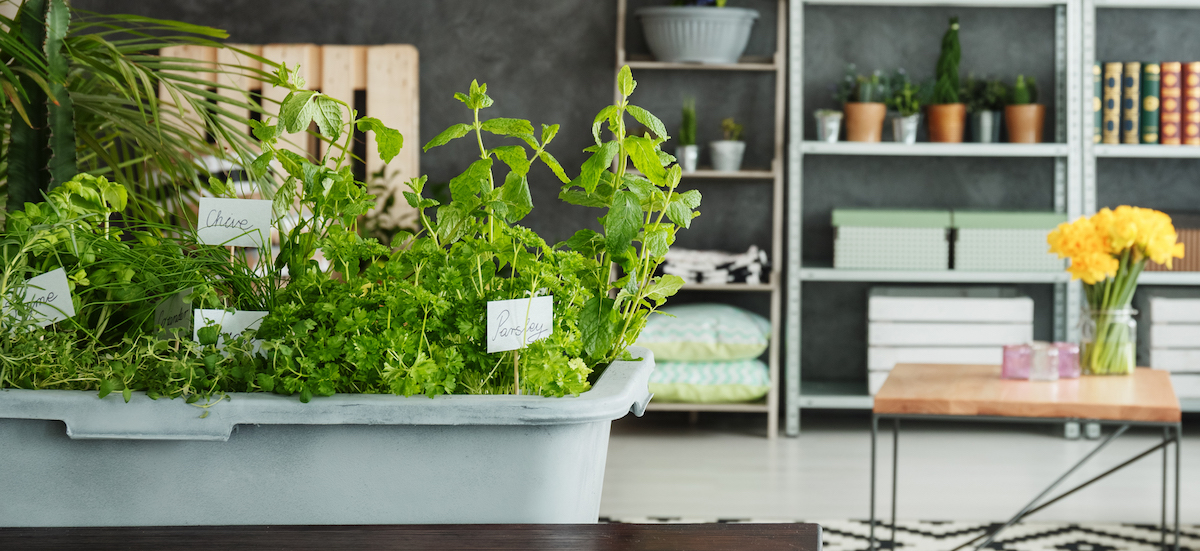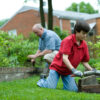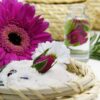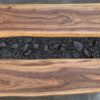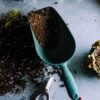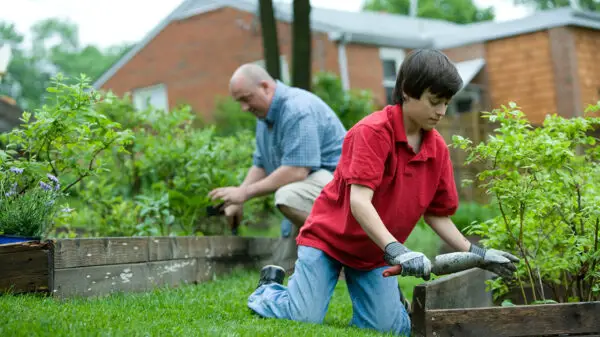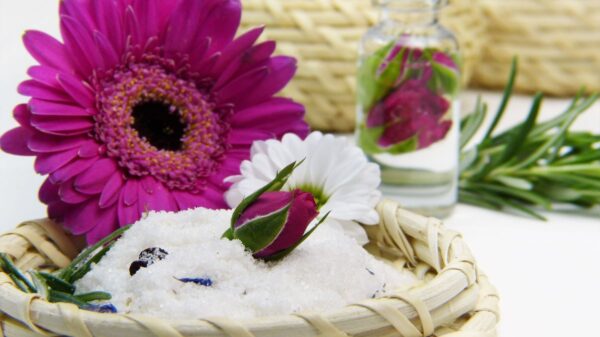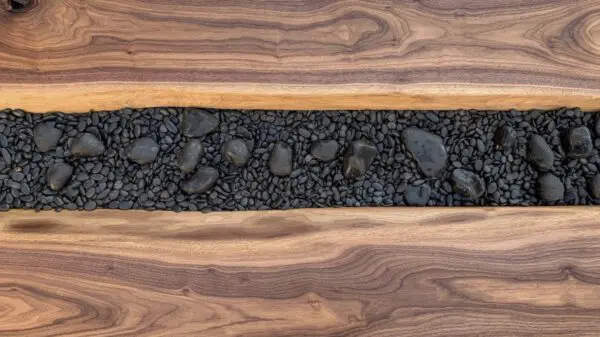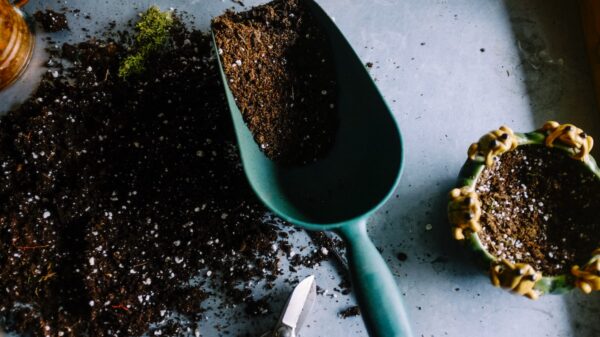Growing Herbs Indoors
There is nothing quite like the taste of fresh herbs. Whether you are cooking a meal or just making a cup of tea, nothing adds flavor quite like fresh herbs. But what if you don’t have access to a garden? Or what if the weather isn’t cooperating and you can’t get outside to garden? Don’t worry – you can still grow your own herbs indoors! In this blog post, we will discuss which herbs are best suited for indoor growth, and give you all the best tips for getting started on your indoor herb garden!
So, what herbs can be grown indoors? Almost any herb can be grown indoors, but some are better suited than others. Basil, chives, oregano, thyme, and parsley are all great choices for indoor growth. These herbs are relatively easy to care for and don’t require a lot of space.
Other herbs like cilantro and dill can also be grown indoors, but they may need a bit more care. Now that you know which herbs can be grown indoors, let’s talk about why they can thrive indoors and how to get started growing them. Read on for everything you need to know about growing herbs indoors!
The Benefits of Growing Herbs Inside
Before we begin, let’s talk about why you might want to grow herbs indoors in the first place. After all, you can always just buy them at the store, right? Well, there are actually several benefits to growing your own herbs indoors!
For one thing, indoor herb gardens are a great way to add a bit of greenery to your home. If you don’t have access to an outdoor space or if you live in an apartment, an indoor herb garden can bring the outdoors inside. Not to mention, it can add a pleasant scent to your home!
In addition, growing your own herbs indoors is a great way to save money. Herbs can be expensive, especially if you are buying them organic. But if you grow them yourself, you can get all the fresh herbs you want at a fraction of the cost.
Finally, growing herbs indoors is a great way to have access to fresh herbs all year round. Even if it’s snowing outside, you can still enjoy the taste of fresh basil in your pasta or oregano in your soup!
So now that you know the benefits of growing herbs indoors, let’s talk about how to get started.
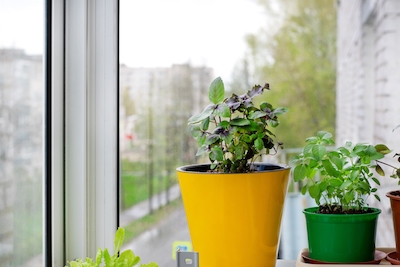
Choosing Which Herbs to Grow Indoors
If you’re new to growing herbs, starting with one or two is a good idea. Once you get the hang of it, you can add more herbs to your indoor garden. When choosing which herbs to grow, consider what you like to cook with most. If you’re a fan of Italian food, basil and oregano are good choices. If you like to make soup or roast chicken, thyme or rosemary are great options. And if you love to add fresh flavor to salads, parsley is a must-have.
For tea lovers, growing mint indoors is a great option. Mint is relatively easy to care for and can thrive in both sunny and shady spots. Just be sure to plant it in a pot of its own – mint tends to spread quickly! Another great herb for tea is lemon balm. This herb has a slightly lemony flavor and can be used fresh or dried.
Once you’ve decided which herbs to grow, it’s time to gather your supplies and do the prep work.
What You’ll Need to Grow Herbs Indoors
Fortunately, you don’t need much to get started growing herbs indoors. Here are a few things you’ll need:
- Herbs of Your Choice (Seeds or Seedlings)
- Pots or Containers
- Potting Soil
- Fertilizer (Optional)
- A Sunny Windowsill or Grow Light (if you don’t have a sunny spot)
If you are starting with herb seeds, you will also need:
- Seed Starting Mix
- Trays or Pots for Seedlings
- Water Can or Spray Bottle
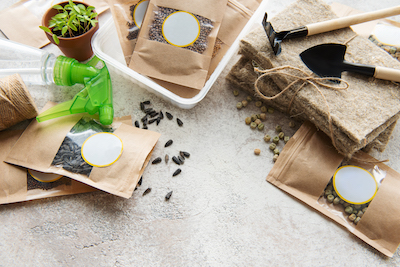
Getting Started With Your Indoor Herb Garden
Now that you have everything you need, it’s time to get started! If you are starting with herb seeds, the first step is to plant them in the seed starting mix. Once the seeds have sprouted, you can transplant them into pots or containers. Be sure to use potting soil, not garden soil. Garden soil is too dense and can compact easily, which is not good for herbs.
If you are starting with herb seedlings, simply plant them in pots or containers filled with potting soil. Once your herbs are planted, place them in a sunny spot. If you don’t have a sunny windowsill, you can use a grow light.
Water your herbs regularly, making sure the soil is evenly moist but not soggy. You may need to water more often in hot weather or if your pots are small. Every few weeks, fertilize your indoor plants with an all-purpose fertilizer.
Also, make sure to keep the area where you will have the indoor garden clean. So that you can keep pests away from your garden.
Watering Your Herbs
Of course, the most important part of caring for your herbs is watering. This seems simple enough but it can be far too easy to over-water or forget to water them altogether.
Here are a few tips for watering your indoor herbs:
- Water early in the day so the leaves have time to dry before nightfall.
- Check the soil before watering. If it’s still moist, wait another day or two before watering again.
- Use lukewarm water, not cold water from the tap.
- Only water once a week or so unless it is quite hot and dry in your home then you may need to water twice a week.
- Always use a pot that has drainage holes.
- Check the saucer and bottom of the pot often to make sure it’s not sitting in water.
When To Know Your Herbs Are Ready to Harvest
So now you have lovingly planted your herbs, cared for them, and patiently waited for them to grow. But how do you know when they are ready to harvest? Most herbs take anywhere from 2 to 6 weeks to mature.
Here are a few signs that your herbs are ready to be harvested:
- The leaves are big and full.
- The plant has stopped growing taller.
- The flavor is at its peak.
When harvesting your herbs, cut them back by about one-third of their height. This will encourage new growth and prevent the plant from becoming leggy. Be sure to use sharp scissors or pruning shears so you don’t damage the plant.
If you’re not sure if your herbs are ready to be picked, it’s always better to be on the side of caution and wait a few more days. You can always snip off a small section of the herb to test it out. After you’ve harvested your herbs, you can use them fresh or dry them for later use.
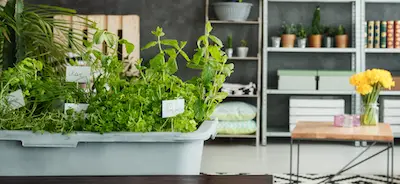
Storing or Drying Harvested Herbs
After you have harvested your indoor herbs, you have two choices: use them fresh or dry them for later. If you plan to use your herbs right away, simply wash them and pat them dry. Then store them in a container with a lid in the refrigerator for up to a week.
If you want to dry your herbs, there are a few different ways you can do it:
- Hang them upside down in a cool, dark place.
- Place them on a screen in a warm, dry place.
- Use a dehydrator set to 95 degrees Fahrenheit.
No matter which method you choose, it will take about two weeks for your herbs to be completely dried. Once they are dried, store them in an airtight container in a cool, dark place.
Herbs are great fresh or dried, so it’s up to you which way you want to use them. You can always try out both methods and see which you prefer for the next harvest!
Final Thoughts On Growing Herbs Indoors
Growing herbs indoors is a great way to always have fresh herbs on hand. It’s also a fun and easy project that even beginner gardeners can successfully do. Be sure to start with healthy plants or seeds, use the right potting soil, and give them plenty of sunlight. With a little love and care, your indoor herb garden will thrive! Remember, the best herbs to grow indoors include: basil, chives, cilantro, oregano, parsley, and thyme. Thanks for reading and good luck with your indoor herb garden!
Related Questions
Are any herbs toxic to pets?
Some herbs can be toxic to pets if they ingest them. Commonly known toxic herbs include aloe vera, chives, garlic, holly, juniper, and yew. If you suspect your pet has ingested a toxic herb, please contact your veterinarian immediately.
What are the best herbs for a humid house?
The best herbs for a humid house are basil, oregano, thyme, rosemary, and mint. These herbs can thrive in both sunny and shady spots.
Can I grow herbs indoors all year round?
Yes, you can grow herbs indoors all year round! Just be sure to place them in a sunny spot and water them regularly.
What is the best way to dry herbs?
The best way to dry herbs is by hanging them upside down in a dark, dry place. You can also lay them out on a screen or newspaper in a dark, dry place.


